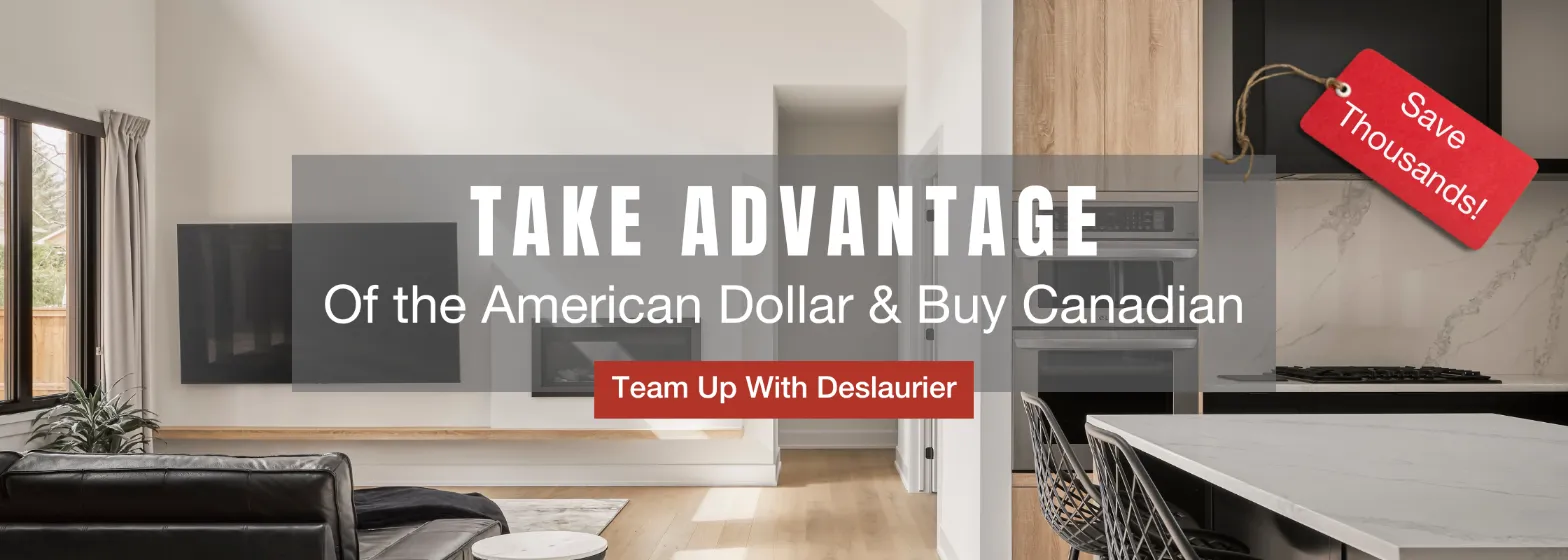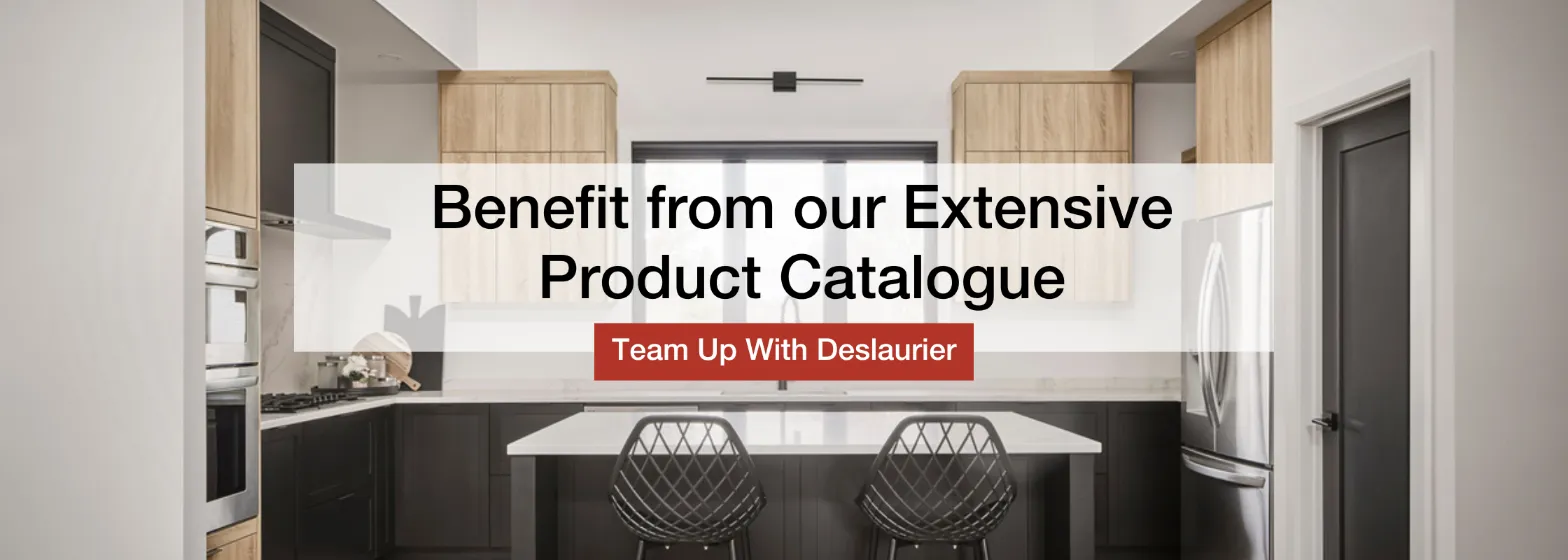Accessorizing a kitchen with hardware may seem like a small task compared to choosing a countertop finish, designing an island, or picking a colour for your cabinets.
In reality, your choice of hardware is a weighty one—it’s the small details that create larger-than-life kitchens, after all!
If you’re wondering how to choose cabinet hardware, you’re in the right place. This article will guide you through all those hard hardware decisions, one by one. Design Consultant Kim Johnson lends her experience to show you how to get creative and express yourself through knobs, pulls, and everything in between.
Let’s get to it!
The Basics of Cabinet Hardware
How do you go about choosing cabinet hardware? There are six key considerations that you want to prioritize in your decision-making process, namely:
- Type
- Feel
- Function
- Style
- Finish
- Size
These categories work like filters. Once you have a clear desire in each of these six areas, you’ll narrow down your options to just a handful. From there, you should be able to finalize your hardware selection with ease.
Choosing a Cabinet Hardware Type
Picking a type of hardware is probably going to be your simplest hardware-related design decision.
Even with the plethora of sizes, finishes, and styles out there, there are really only two primary types of hardware: knobs and pulls.
You aren’t limited to one or the other, though. You can definitely mix and match! Many dynamic kitchen designs use a combination of knobs and pulls.
When both kinds of hardware are in the mix, normally knobs are used for cabinet doors while the pulls are used on drawer fronts, like in this kitchen:
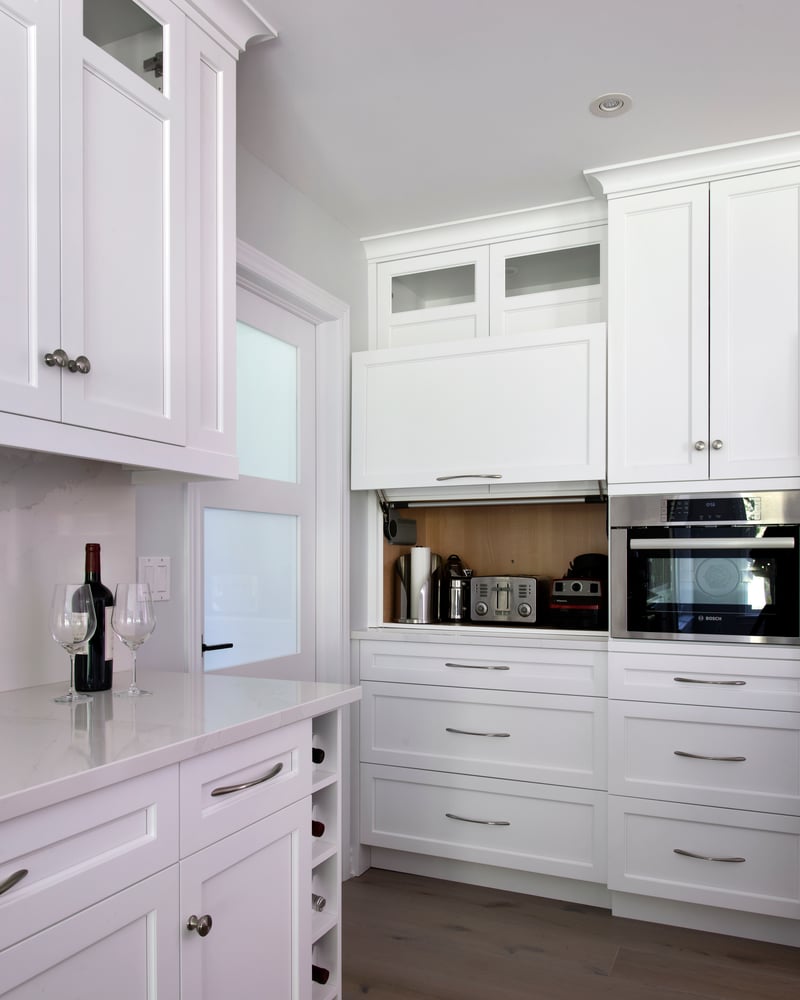
Remember, there’s a time for rules, and there’s a time to throw the rules out the window! This is your kitchen. You call the shots. If you want to use two knobs per drawer, go for it. If you want really long pulls on the drawers and really short pulls on the doors, by all means make it happen.
Our only recommendation is that you have some overarching logic to what goes where. As long as there’s a pattern in place—whatever it may be—your design will look clean and intentional. Without any guiding thought process behind hardware placement, you run the risk of the space looking cluttered and chaotic.
Getting to Know the Feel of Cabinet Hardware
Pro Design Consultant Kim Johnson tells us that,
You want to like the look, but you need to like the feel of hardware even more. Nine out of ten people will forget what hardware they chose throughout the reno process, but they’ll remember if it’s awkward, uncomfortable, or if there’s something that bothers them about it.
Spend time in the showroom of your cabinet or hardware supplier testing out the feel of different hardware options.
Sometimes, hardware can look great but is artificial or lightweight to the touch. You may find that you prefer the heft and weight of some brands over others.
Take the time to explore. The last thing you want to do is customize a cabinetry system to perfection, only to attach lackluster hardware. Even if you don’t realize it right away, you probably know what you like on some level. By touring through the showroom, you’ll gravitate towards certain pieces naturally.
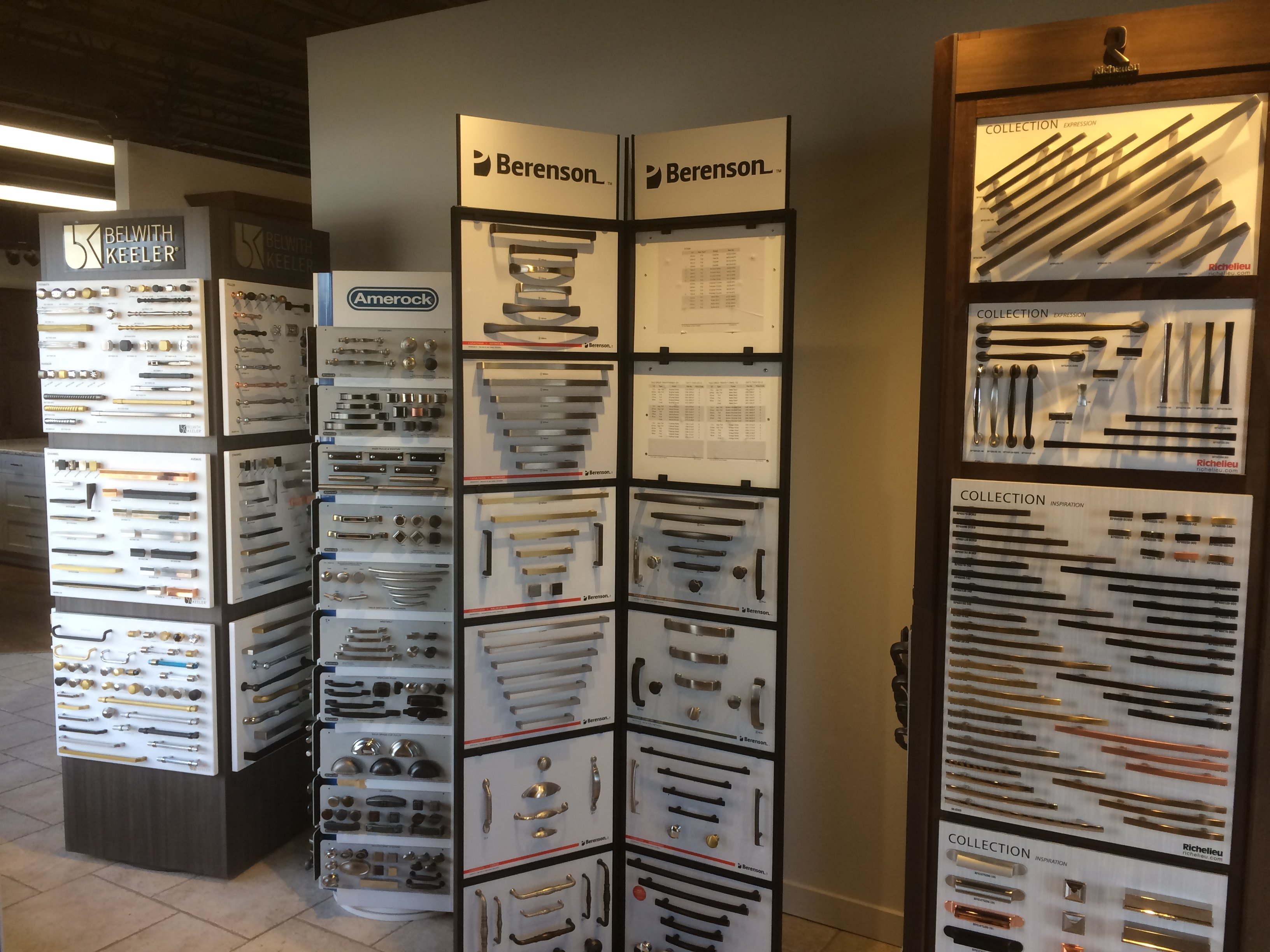
Considering the Function of Cabinet Hardware
You should always consider the function of the hardware type you choose along with your aesthetic preference. Ideally, your hardware will be both visually attractive and practical.
For example, do you or someone in your family struggle with fine motor skills? Sometimes, elderly homeowners or young children struggle to open doors with very small knobs. In that case, large door pulls might be easier to operate.
Or maybe you’re wary of anything with sharp corners. Perhaps you’re worried about snagging your favourite sweater or building a kid-friendly kitchen is important to you. A hardware style with a rounded edge, such as a knob, might be the safest choice.
Are you aiming for the ultimate low-maintenance kitchen? If so, you’ll want your hardware choice to be easy to clean. That probably means choosing a simple design without ornate grooves or mouldings where dirt and grime can build up. It also might mean refraining from door pulls with wide, flat surfaces where dust and crumbs can settle.
Asking yourself these lifestyle-oriented questions will help you in your quest for functional kitchen cabinet hardware.
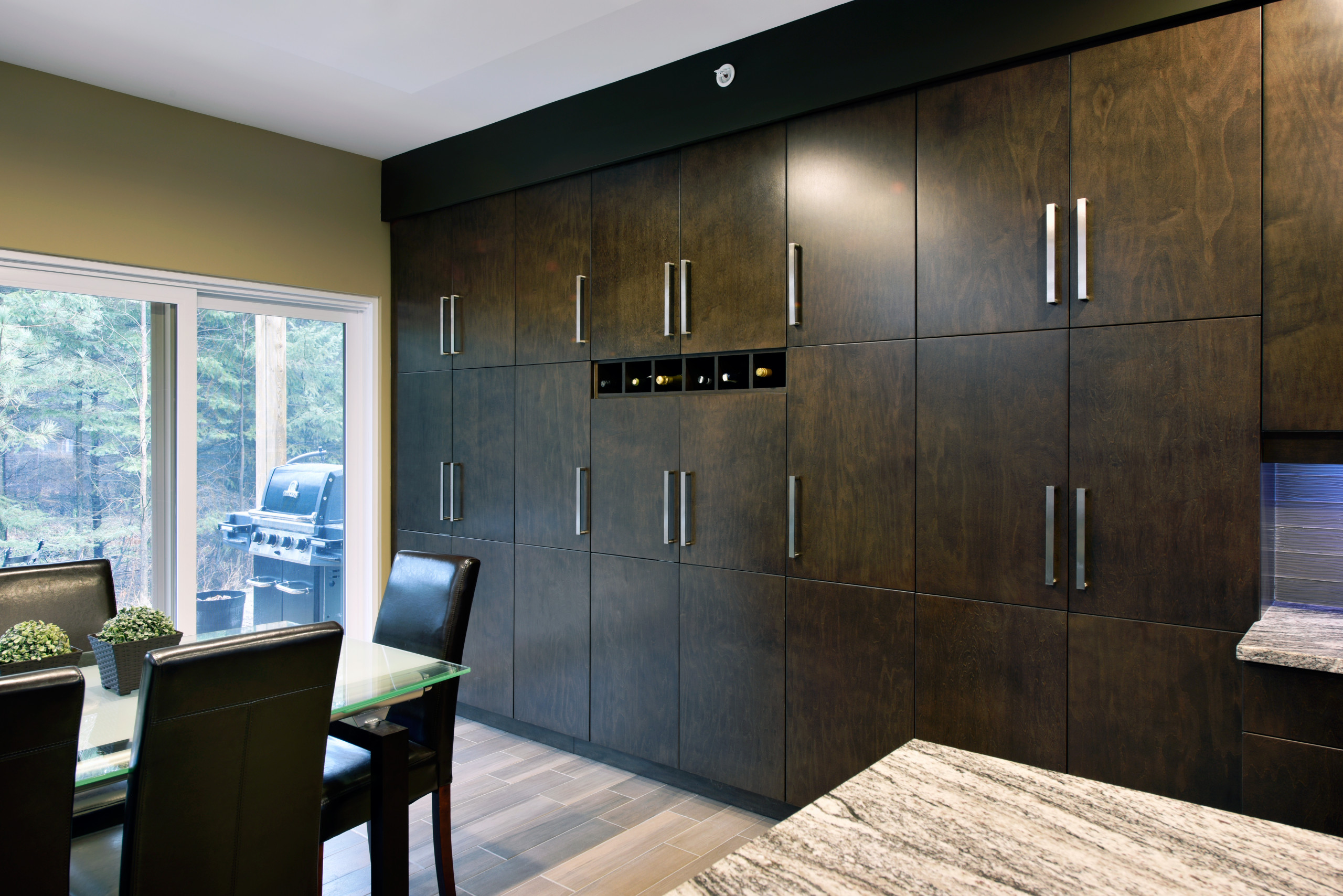
Picking a Cabinet Hardware Style
Choosing the style of your hardware is a test in micro and macro kitchen design. You want the micro, individual style of each hardware unit to complement the macro, top-to-bottom kitchen design style you’re developing.
Previously in our Learning Centre, we’ve put together a few resources that evaluate modern kitchen design, traditional kitchen design, and farmhouse kitchen design. Read these articles for a more in-depth look at each kitchen style’s unique characteristics.
Typically, modern hardware is simplistic and unassuming. Long, oversized pulls are great for modern, flat panel cabinets. On the other hand, farmhouse kitchen hardware is more vintage and rustic. Rich metallic hues like brushed brass and venetian bronze are fantastic picks for that country homestead vibe. Lastly, traditional kitchen hardware is ornate and upscale—details are what make traditional spaces so elegant.
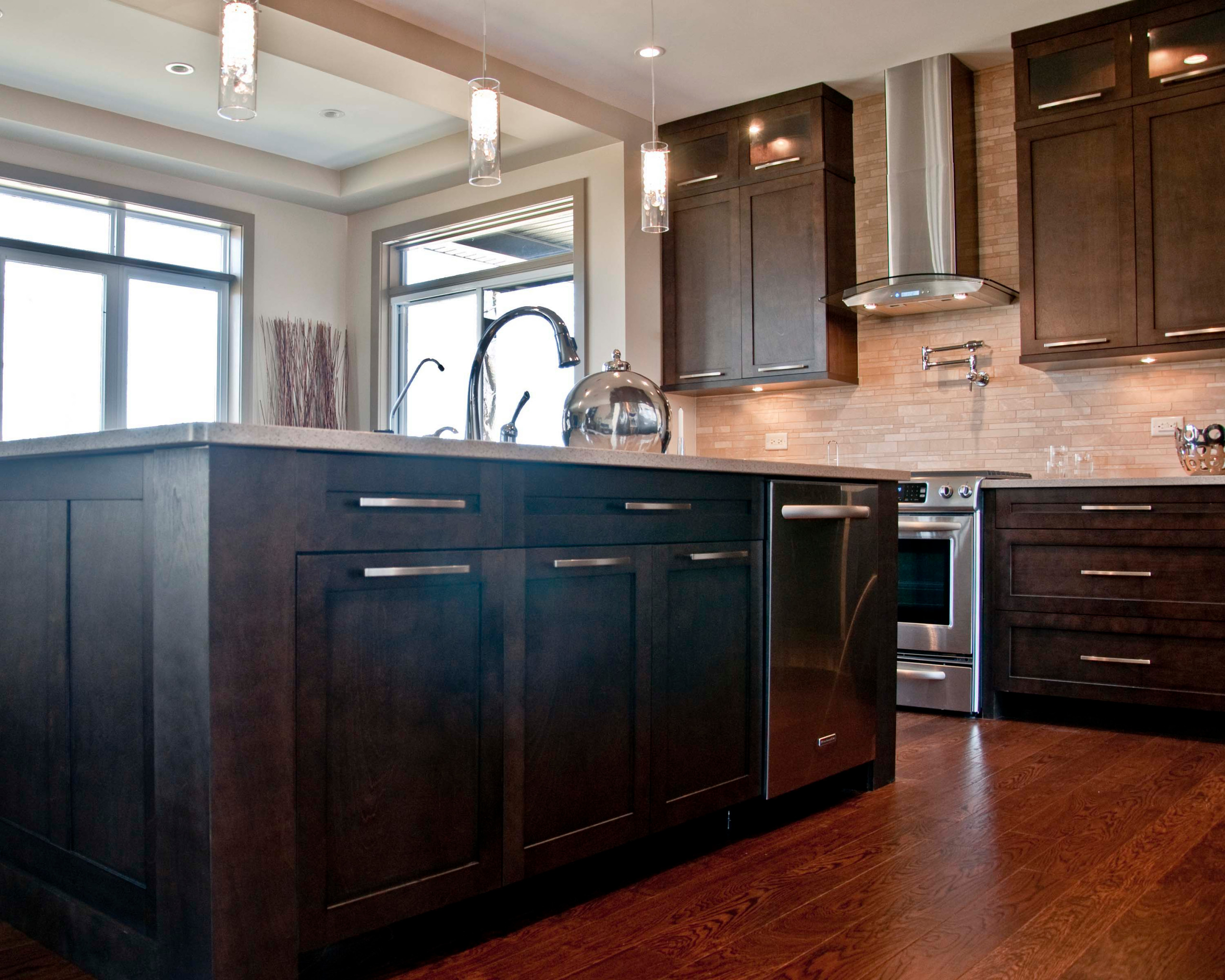
Selecting a Cabinet Hardware Finish
There are a lot of finishes out there. A lot. Picking a hardware finish is a little bit like picking a shade of paint: “white” is never just “white”. It’s eggshell or ivory or winter snow! (Interested in paint? Check out our 5 best-selling kitchen cabinet paints & stains).
For instance, just a sampling of “silver” hardware finishes includes:
- Polished nickel
- Satin nickel
- Stainless steel
- Polished chrome
You don’t need to know the subtleties between these nuanced finishes just yet, but it would be helpful to understand what umbrella of colour you’re after.
Do you want a metallic hardware finish? If so, does silver, gold, or bronze strike your fancy?
Maybe you really want to make a striking, on-trend statement: black cabinet hardware is hot right now!
Think about how the hardware finish will pair with your cabinet’s paint or stain, too. You can add extra visual interest to your kitchen by using light hardware on dark cabinets or vice versa.
Conversely, you can set an elegantly “noir” mood by setting dark pulls on dark cabinets, like in this suave kitchen design:
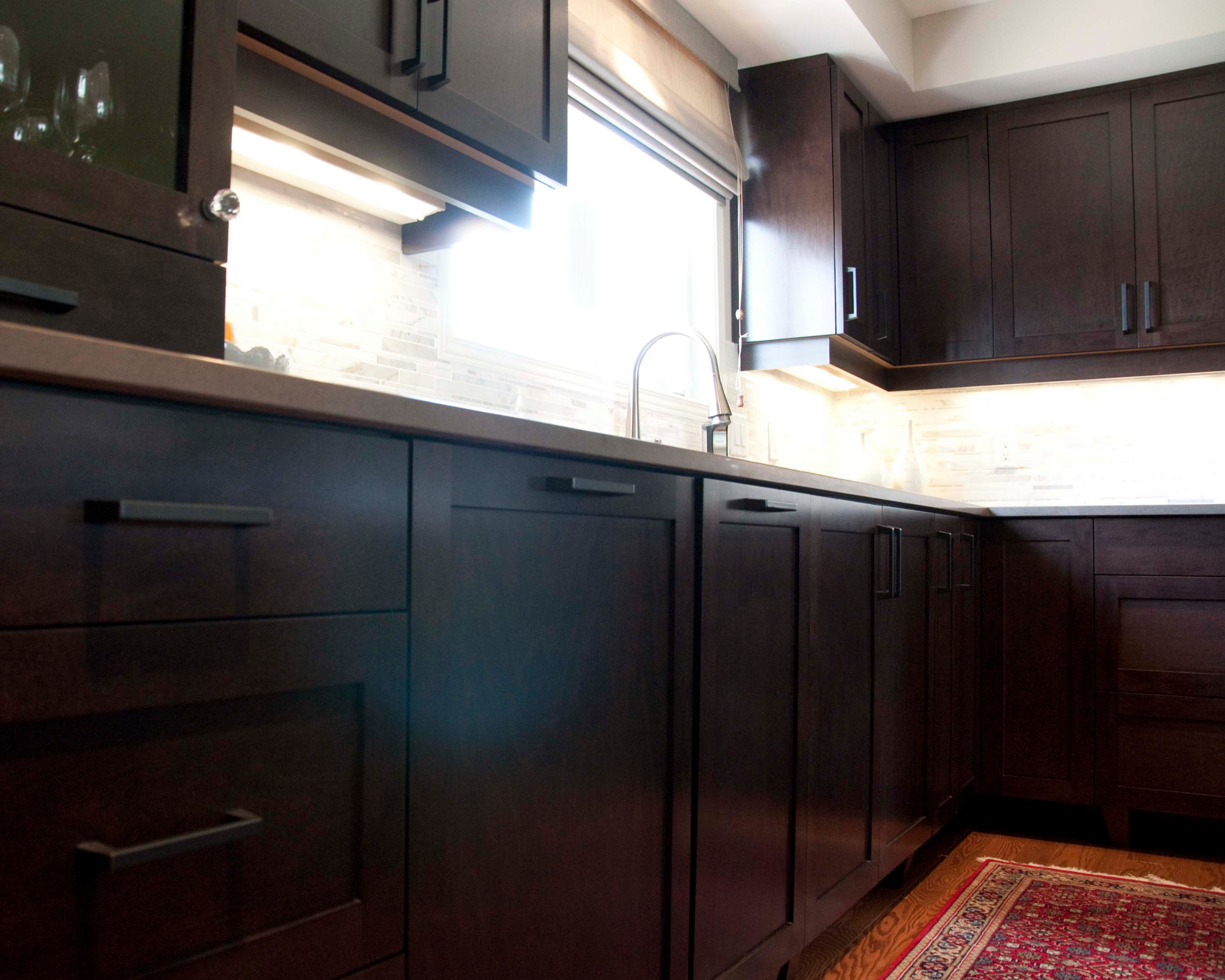
Still lost? Take your other kitchen décor into account. When guiding her clients through hardware selections, Designer Kim Johnson says:
I try to key off other things that they’re doing in their space to coordinate colours. If I can find another element they’re working with, then we can tie in the hardware finish nicely.
Do you already have pendant lights picked out for your kitchen island? You might want to match those two products together. Maybe your faucet is black and you want your hardware to blend in. Think about each element in your kitchen and how your hardware’s finish will play off of it.
For example, in this kitchen, brass hardware is an intentional match with brass pendant lights and bar stools:
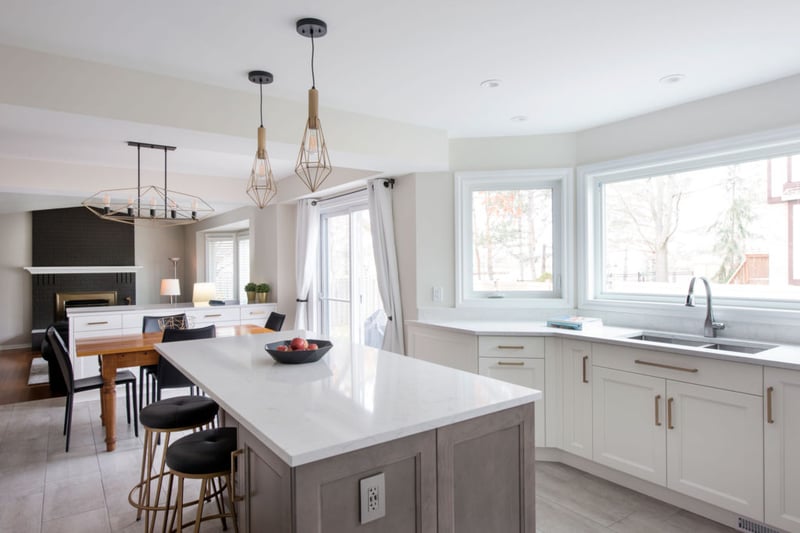
As a default, use your appliances to set a colour scheme. Your appliances are major staples in your kitchen design and it’s usually pretty easy to find hardware to coordinate with stainless steel or black kitchen appliances.
Wondering how metallic finishes interconnect in a design?
There’s no rule against mixing metals, however, for the most part, keeping metals similar—either warm or cool—makes the most sense. Black is the exception and can go either way.
Click for more info on how to choose appliances for a kitchen renovation.
Finalizing the Size of Cabinet Hardware
The final decision you have to make concerns the size and length of the cabinet hardware.
Here again, you may come across so-called design “rules” that you feel you have to follow.
Don’t buy into it.
While there are industry norms out there, there’s no hard-and-fast law stating how long or large your hardware should be. The only criterion that matters is that you like the way it looks in proportion with the rest of your cabinets.
Some homeowners want to play with more than one hardware size within the kitchen. That’s possible, too. You can size up a door pull for an extra-large pantry and size it down for a particularly small pull-out. That being said, to make things easy on yourself, it’s best to find one size that will work for the majority of the space, and then tweak the size of one or two pieces if need be.
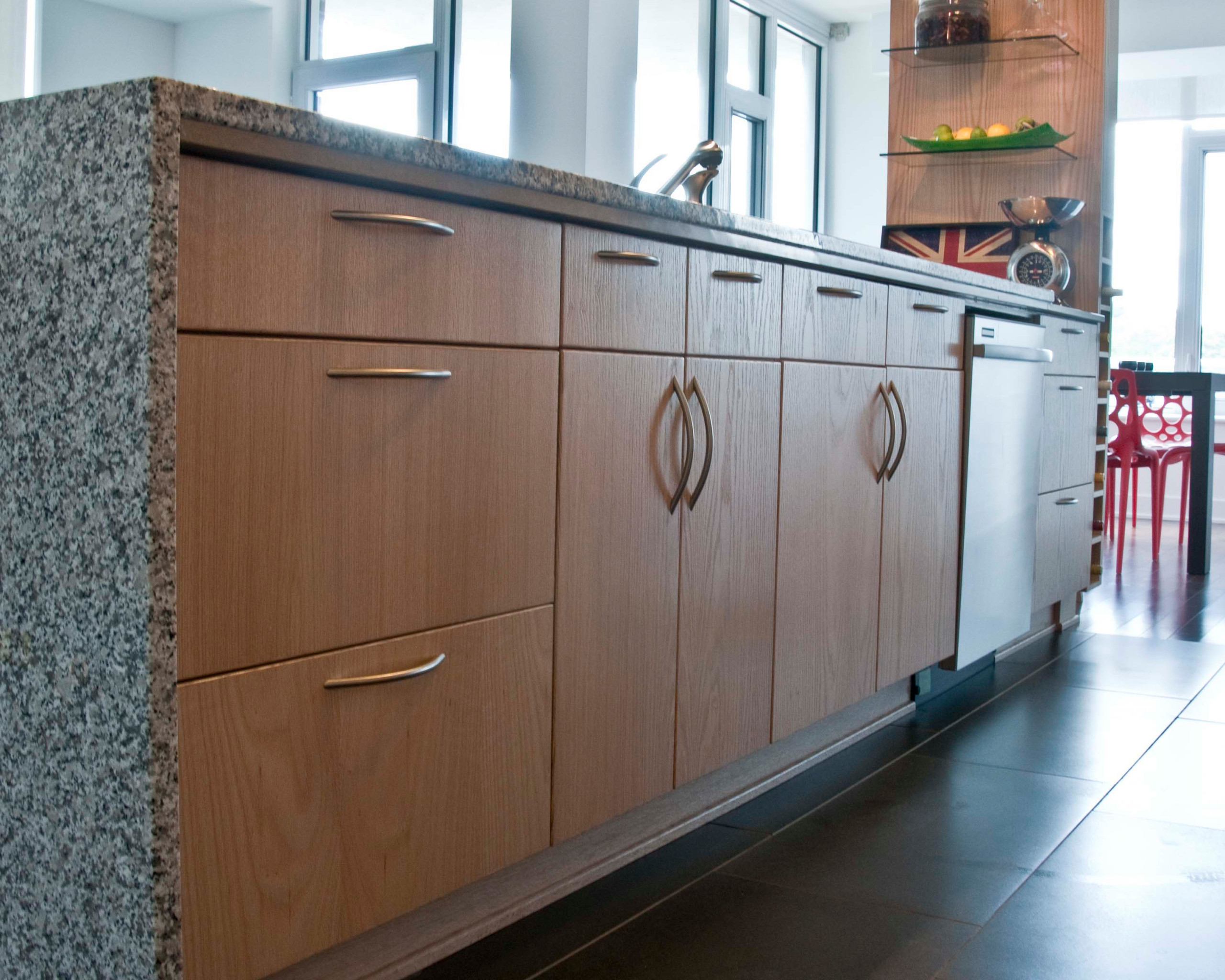
Cabinetry Without Hardware
Going Hardware-Less
Choosing not to install hardware is just as much a design choice as any other!
If you want to create a completely flush exterior on your upper cabinets, you can use recessed bottoms or tip-on cabinets as an alternative-style opening mechanism.
Don’t be fooled, however; although it may seem counter-intuitive, hardware-less cabinets don’t necessarily cost any less. Rather, they often cost more. That’s because adding hardware-less features requires additional customization. You have to modify the cabinet door to create recessed bottoms or switch up hinges and drawer mechanisms for tip-on to work. Sometimes, you even have to add power with push buttons.
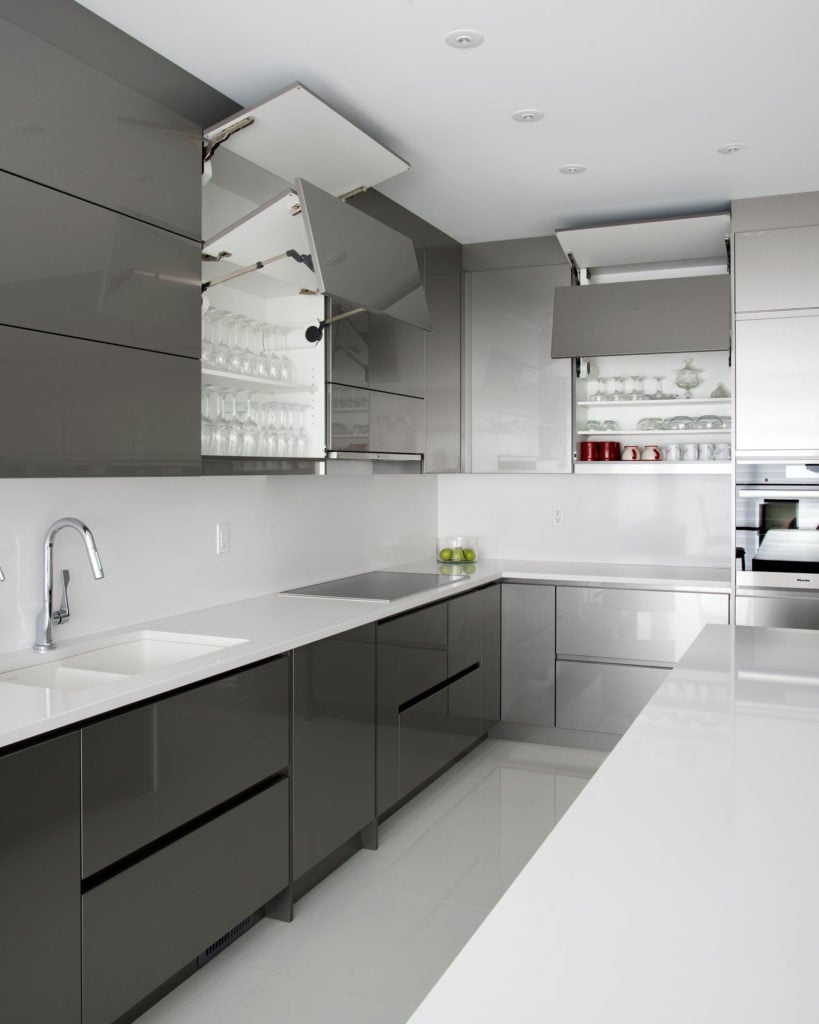
Ultimately, going without hardware is a style choice. There are lots of fancy hardware-less options out there, and depending on how far you want to take it, having no hardware at all can get pricey.
Not to mention, when considering hardware-less cabinetry, it’s worth your while to think about future maintenance. Without hardware, your cabinets are more vulnerable to fingerprints and smudges.
Sometimes, people think they don’t want hardware, but when they realize they’re trading hardware for fingerprints, hardware starts to look good again. —Designer Kim Johnson
How Much Does Cabinet Hardware Cost?
Budgeting for Hardware
Of course, you can’t forget to factor your budget into your decision-making process.
The cost of kitchen cabinet hardware ranges. There’s something out there for everyone. A single unit can cost $5 and another one on the display beside it can cost $50. If you have an above-average kitchen size with 30 cabinet doors and you make an ultra-luxe hardware selection, you can spend thousands of dollars on hardware alone.
Keep in mind that your kitchen cabinet quote may already include a hardware allowance. Cabinet manufacturers operate differently, but it's common to have hardware built into pricing. You’ll want to chat with your designer to learn whether you have a hardware allowance or not.
Design With Deslaurier
Deslaurier Custom Cabinets is a premier cabinet maker in Jupiter, FL. We partner with world-class hardware suppliers, like Amtek, Berenson, and Richelieu to offer homeowners like you literally thousands of hardware design options in type, feel, function, style, finish, and size.
To view our hardware displays, book a showroom appointment with us. If you’re interested in becoming a dealer, we’d love to hear from you too!
Related Links:
- Can I Get a Custom Colour Match for My Cabinets?
- 5 Best-Selling Countertops
- How to Plan Lighting for Your Kitchen
